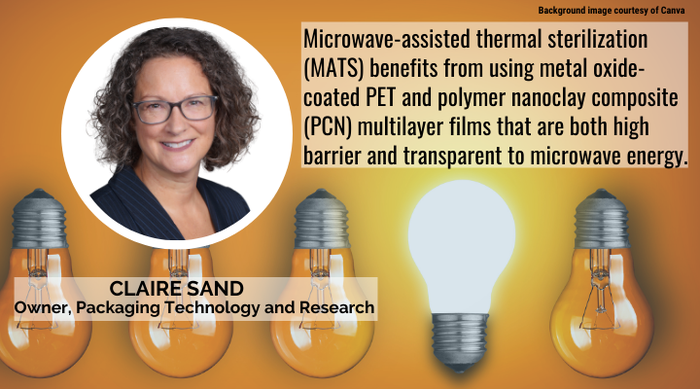Packaging that preserves nonrefrigerated foods and track and trace technology permits food access despite conflicts and natural forces.
March 10, 2022

Due to armed conflict such as in Ukraine and other countries, natural disasters, and ongoing effects of climate change, numerous people face food-access challenges at least intermittently. Nonrefrigerated packaged food allows relief agencies to provide food access where and when it’s needed. And preserving food without the aid of refrigeration requires packaging designed for specific processing — fermented, retort, aseptic, microwave-assisted thermal sterilization (MATS), and dehydration. Process and package requirements vary with the type of processing while track-and-trace aids in ensuring critical food supplies arrive where and when needed.
Packaging that preserves perishable foods.
Fermentation of food has a long history extending from the fermentation of cheeses and dough 4,000 BC in Kemet (now Egypt) and 2000 years later with fermenting of cabbage during the Ming Dynasty. Fermentation packaging requirements include acid resistance, pressure control, oxygen and moisture barrier, and temperature monitoring and packaging needs to withstand UV-C/B, ebeam, or hydrogen peroxide sterilization before product filling.
Retort evolved from Appert’s corked glass jars in the early 1800s to glass jars equipped with metal closures, steel, and aluminum 2- and 3-piece cans to multilayer retort pouches that were first used in the 1960s. Regardless of the final package, reliable destruction of Clostridium botulinum is essential in retort processing. This requires packaging to resist temperatures approaching 300° F for a variable time. Notably, polymers move from a crystalline to an amorphous state within retort temperatures, a transition that causes oxygen permeability to increase and layers within a multilayer package to experience differential flexing.

Aseptic connects packaging and food within a closed system in a sterile environment. This demands packaging that is resistant to sterilization methods such as hydrogen peroxide (H2O2), UV light and high-temperature filling. Sufficient mechanical strength is also needed for aseptic carton and pouch formats to enable high-speed production with optimized seals.
Microwave-assisted thermal sterilization (MATS) benefits from using metal oxide-coated PET and polymer nanoclay composite (PCN) multilayer films that are both high barrier and transparent to microwave energy. The first industrial MATS unit is run by Tata Smartfoodz, which operates in India.
Dehydration requires product-dependent packaging barrier requirements. For example, nuts and cured meat with a high degree of mono and polyunsaturated fats require an oxygen barrier and, often, a nitrogen replacement of available oxygen within the package. Freeze-dried foods demand an excellent moisture barrier.
Trace-and-trace technology as a cornerstone of improved food access is intelligent packaging that delivers supply chain history and fraud detection. Linking foods from farm-to-fork, the technology tracks where food is, its condition, and facilitates transferring food to those in need.
Track-and-trace is accomplished with intelligent packaging such as radio frequency identification (RFID) and near field communication (NFC). In addition, intelligent packaging equipped with decentralized identifiers (DID) can use cryptographic trust to verify food chain of custody. This impedes food fraud and ensures that food arrives at the intended destination or person. As well, consumers can verify that the food is safe. Other intelligent packaging technologies such as sensors nutrition are linked to specific health needs. Furthermore, greater efficiencies in securing food access can be achieved from farm-to-fork using integrated intelligent packaging.
Claire Sand has 30+ years of experience in industry and academia. She’s owner of Packaging Technology and Research and Gazelle Mobile Packaging and an Adjunct Professor, CalPoly, Michigan State University, and the University of Minnesota. You can reach her at www.packagingtechnologyandresearch.com or via email [email protected].
About the Author(s)
You May Also Like




